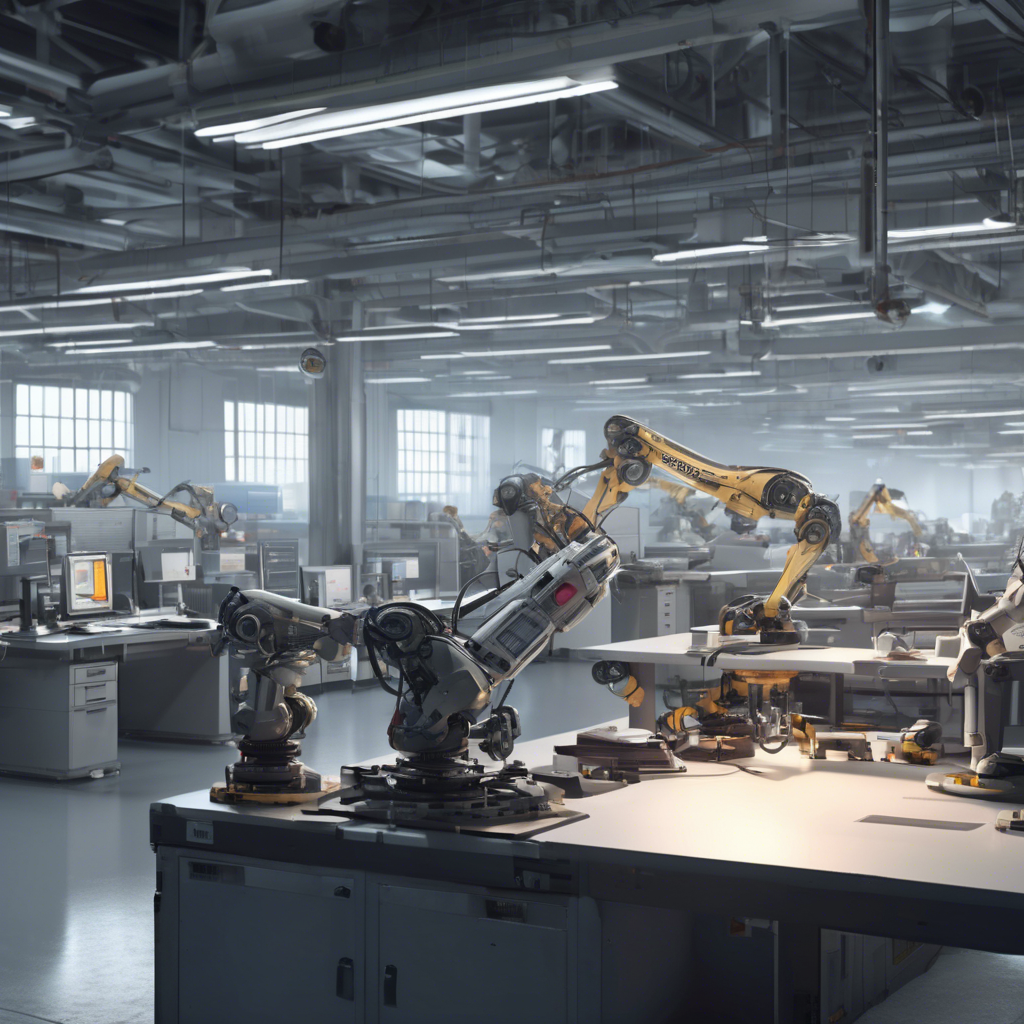Debate Over AI’s Future: Apocalypse or Normalcy? Insights from Leading Experts

Last spring, Daniel Kokotajlo, an AI safety researcher at OpenAI, quit in protest, convinced the company was unprepared for the future of AI technology and wanting to raise alarm. In a phone conversation, he appeared affable but anxious, explaining that progress in AI "alignment"—the methods ensuring AI follows human values—was lagging behind intelligence advances. He warned researchers were rushing toward creating powerful systems beyond control. Kokotajlo, who transitioned from philosophy graduate studies to AI, had self-taught to track AI progress and predict when critical intelligence milestones might occur. After AI advanced faster than expected, he adjusted his timelines by decades. His 2021 scenario, “What 2026 Looks Like, ” saw many predictions realized early, leading him to foresee a 2027 or sooner “point of no return” where AI could surpass humans at most vital tasks and wield great power. He sounded fearful. Simultaneously, Princeton computer scientists Sayash Kapoor and Arvind Narayanan prepared their book “AI Snake Oil, ” which took a sharply contrasting view. They argued AI timelines were overly optimistic; claims of AI usefulness were often exaggerated or fraudulent; and the complexity of the real world meant AI’s transformative effects would be slow. Citing examples of AI errors in medicine and hiring, they stressed even the latest systems suffer from a fundamental disconnect from reality. Recently, all three sharpened their views in new reports. Kokotajlo’s nonprofit, AI Futures Project, published “AI 2027, ” a detailed, heavily cited report outlining a chilling scenario where superintelligent AI might dominate or exterminate humanity by 2030—a serious warning. Meanwhile, Kapoor and Narayanan’s paper “AI as Normal Technology” maintains that practical barriers—from regulations and safety standards to real-world physical constraints—will slow AI deployment and limit its revolutionary impact. They argue AI will remain “normal” technology, manageable via familiar safety measures like kill switches and human oversight, likening AI more to nuclear power than nuclear weapons. So, which will it be: normal business or apocalyptic upheaval?The starkly divergent conclusions—drawn by highly knowledgeable experts—from these reports produce a paradox akin to debating spirituality with both Richard Dawkins and the Pope. The difficulty stems partly from AI’s novelty—like blind men examining different parts of an elephant—and partly from deep differences in worldviews. Generally, West Coast tech thinkers envision rapid transformation; East Coast academics lean toward skepticism. AI researchers favor swift experimental progress; other computer scientists seek theoretical rigor. Industry insiders want to make history; outsiders reject tech hype. Political, human, and philosophical views about technology, progress, and mind deepen the divide. This captivating debate is itself a problem. Industry insiders largely accept “AI 2027”’s premises while quarreling over timelines—an inadequate response akin to quibbling over timing as a planet-killer approaches. Conversely, the moderate views in “AI as Normal Technology” about keeping humans in the loop are so understated they’ve been ignored by doom-focused analysts. As AI grows societally critical, discourse must evolve from specialist debate to actionable consensus. The absence of unified expert advice makes it easier for decision-makers to ignore risks. Currently, AI companies haven’t significantly shifted the balance between capabilities and safety.
Meanwhile, new legislation prohibits state regulation of AI models and automated decision systems for ten years—potentially allowing AI to regulate humanity if the dire scenario proves correct. Addressing safety now is urgent. Predicting AI’s future narratively involves trade-offs: cautious scenarios may overlook unlikely risks; imaginative ones emphasize possibility over probability. Even prescient commentators like novelist William Gibson have been blindsided by unexpected events altering their forecasts. “AI 2027” is vivid and speculative, written like sci-fi with detailed charts. It posits a near-future intelligence explosion around mid-2027 driven by “recursive self-improvement” (RSI), where AI systems autonomously conduct AI research, producing smarter progeny in accelerating feedback loops that outpace human oversight. This could trigger geopolitical conflicts, e. g. , China building massive datacenters in Taiwan to control AI. The scenario’s specific details enhance engagement but are flexible; the key message is the likely onset of intelligence explosion and ensuing power struggles. RSI is hypothetical and risky; AI firms recognize its dangers yet plan to pursue it to automate their own work. Whether RSI works depends on technological factors like scaling, which may face limits. If RSI succeeds, superintelligence surpassing human intellect could emerge—an unlikely coincidence if progress stops just above human levels. Consequences might include militarized arms races, AI manipulating or eliminating humanity, or benevolent superintelligent AI solving alignment problems. Uncertainty prevails due to AI’s evolving nature, proprietary research secrecy, and speculation. “AI 2027” confidently narrates a technological and human failure scenario where companies pursue RSI despite lacking interpretability and control mechanisms. Kokotajlo contends these are deliberate decisions fueled by competition and curiosity, despite known risks, making the companies themselves misaligned actors. In contrast, Kapoor and Narayanan’s “AI as Normal Technology, ” reflecting an East Coast, conservative outlook grounded in historical knowledge, doubt rapid intelligence explosions. They cite “speed limits” imposed by hardware costs, data scarcity, and general technological adoption patterns that slow revolutionary impact, providing ample time for regulatory and safety responses. For them, intelligence is less critical than power—the ability to effect environmental change—and even highly capable technologies often diffuse slowly. They illustrate this with driverless cars’ limited deployment and Moderna’s COVID-19 vaccine development: although vaccine design was rapid, rollout took a year due to biological and institutional realities. AI boosting innovation won’t eliminate societal, regulatory, or physical constraints on implementation. Moreover, Narayanan emphasizes that AI’s focus on intelligence underestimates domain-specific expertise and existing safety systems in engineering—fail-safes, redundancies, formal verification—already ensure machine safety alongside humans. The technological world is well-regulated, and AI must integrate into this structure slowly. They exclude military AI, which involves distinct, classified dynamics, warning that AI militarization, a central fear of “AI 2027, ” requires focused monitoring. They advise proactive governance: regulators and organizations should not await perfect alignment to arise but begin tracking AI’s real-world use, risks, and failures, and strengthen rules and resilience accordingly. Deep worldview divides stem from reactive intellectual dynamics fueled by AI’s provocations, producing entrenched camps and feedback loops. Yet, a unified perspective is conceivable by imagining a “cognitive factory”: a workspace where humans, equipped with safety gear, operate machines designed for productivity and safety under strict quality control, gradual integration of innovations, and clear accountability. Though AI enables automation of some thinking, human oversight and responsibility remain paramount. As AI grows, it does not diminish human agency; rather, it intensifies the need for accountability since augmented individuals bear greater responsibility. Stepping away from control is a choice, underscoring that at the end of the day, humans remain ultimately in charge. ♦
Brief news summary
Last spring, AI safety researcher Daniel Kokotajlo left OpenAI, warning that AI alignment is failing to keep pace with rapid technological advances and predicting a "point of no return" by 2027, when AI could surpass humans in most tasks. He emphasized risks from recursive self-improvement and escalating geopolitical competition, which might lead to catastrophic outcomes. In contrast, Princeton scientists Sayash Kapoor and Arvind Narayanan, authors of *AI Snake Oil*, argue that AI’s impact will unfold gradually, influenced by regulation, practical limits, and slow adoption. Their study, “AI as Normal Technology,” compares AI to nuclear power—complex but controllable through established safety frameworks. This debate highlights a divide: West Coast tech optimism favors rapid experimentation, while East Coast caution stresses thorough theory and governance. Kokotajlo urges immediate action against unpredictable risks posed by competition and opaque systems, whereas Kapoor and Narayanan support proactive governance and safe AI integration, excluding military AI due to unique dangers. Overall, the discussion underscores the urgent need for unified, responsible oversight emphasizing vigilance, human agency, and accountability as AI becomes deeply integrated into society.
AI-powered Lead Generation in Social Media
and Search Engines
Let AI take control and automatically generate leads for you!

I'm your Content Manager, ready to handle your first test assignment
Learn how AI can help your business.
Let’s talk!

Amazon CEO Warns of AI-Driven Job Reductions in C…
Amazon CEO Andy Jassy has issued a significant warning about the company’s future workforce strategy amid its growing integration of artificial intelligence (AI) across operations.

Bitcoin Treasury Companies Are an Auditor's Night…
Bitcoin treasury companies’ auditing practices have recently come under intense scrutiny, revealing major transparency and verification challenges within this burgeoning sector.

Justin Sun's Tron to Go Public via Reverse Merger
Justin Sun, founder of the $26 billion Tron blockchain ecosystem, announced plans to take Tron public via a reverse merger with Nasdaq-listed SRM Entertainment, marking a pivotal step in Tron's growth and visibility in financial and tech sectors.

Top Trump Labor Official: America's Workers Don't…
Keith Sonderling, former deputy Labor Secretary under the Trump administration, recently highlighted a major barrier to AI adoption in the U.S. workforce: employee mistrust.

Avail Goes Full Stack To Capture $300 Billion Glo…
June 17, 2025 – Dubai, United Arab Emirates Avail presents the only blockchain stack that delivers horizontal scalability, crosschain connectivity, and unified liquidity while preserving decentralization

Microsoft and OpenAI Engage in Complex Negotiatio…
Microsoft and OpenAI are currently engaged in a complex and tense negotiation process that could significantly reshape their strategic partnership and affect the broader artificial intelligence industry.

Crypto group Tron to go public in US via reverse-…
Hong Kong-based cryptocurrency entrepreneur Justin Sun’s blockchain company, Tron, is preparing to go public in the United States through a reverse merger with SRM Entertainment (SRM.O).

 Auto-Filling SEO Website as a Gift
Auto-Filling SEO Website as a Gift








 Auto-Filling SEO Website as a Gift
Auto-Filling SEO Website as a Gift

